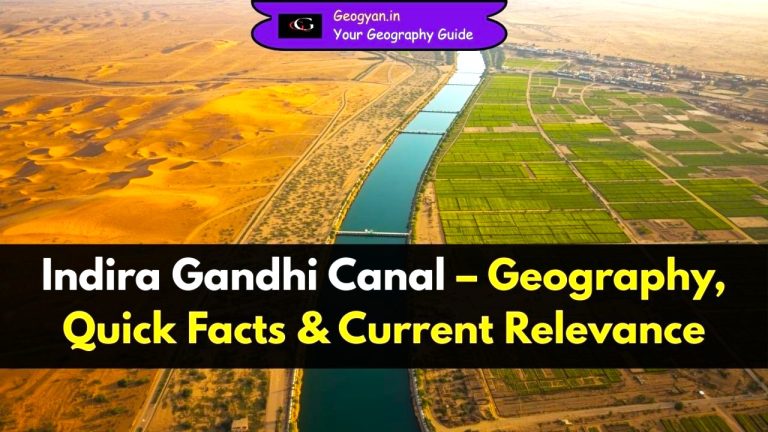Radiation-Target Interactions
Radiation plays an important role in remote sensing as it interacts with the Earth’s surface in different ways. When electromagnetic energy reaches a target, it undergoes three primary types of interactions: absorption, transmission, and reflection. Understanding these interactions is essential for interpreting remote sensing data accurately. For example, when we walk outside on a sunny day, we feel warm because our clothes and skin absorb solar radiation. Similarly, sunglasses help in reducing glare by selectively filtering certain wavelengths.

Types of Radiation-Target Interactions
1. Absorption (A)
Absorption occurs when radiation is absorbed by the target material and converted into another form of energy, such as heat. The extent of absorption depends on the material’s properties and the wavelength of the incident radiation. For example, wearing a black t-shirt on a hot day absorbs more sunlight than a white one, making you feel warmer. Similarly, asphalt roads heat up quickly under the sun due to their high absorption properties, whereas grassy fields remain relatively cooler.
2. Transmission (T)
Transmission happens when radiation passes through a target without being absorbed or reflected. This process is commonly observed in transparent or semi-transparent materials like water or glass. A common example is how sunlight passes through a window, illuminating a room. Similarly, in medical imaging, X-rays transmit through soft tissues but are absorbed by bones, helping doctors visualize internal structures.
3. Reflection (R)
Reflection takes place when radiation bounces off the target surface. In remote sensing, reflection is the most important interaction, as it allows scientists to analyze surface features based on how they reflect electromagnetic waves. A practical example is how a mirror reflects light, allowing us to see our own image. Another example is the moon, which does not emit its own light but appears bright due to the reflection of sunlight.
Types of Reflection
Specular Reflection
When a surface is smooth relative to the incident wavelength, radiation reflects in a single, well-defined direction. This mirror-like reflection is known as specular reflection. A practical example is a calm lake, which acts like a perfect mirror and reflects the scenery around it. Another example is polished car surfaces that reflect sunlight and can sometimes create a blinding effect.
Diffuse Reflection
If the surface is rough compared to the wavelength of the incoming radiation, the reflected energy is scattered in multiple directions. This is called diffuse reflection. Most natural surfaces exhibit a combination of specular and diffuse reflections. For example, a piece of paper reflects light diffusely, allowing us to read and write without glare. Similarly, a rough road surface appears evenly lit under a street lamp because light scatters in multiple directions.

Radiation Interaction with Earth’s Surface
1. Interaction with Vegetation
Leaves contain chlorophyll, which strongly absorbs radiation in the red and blue wavelengths while reflecting green light. This is why leaves appear green. In autumn, chlorophyll content decreases, causing leaves to reflect more red and yellow wavelengths. A practical example is how trees change color in fall, signaling seasonal transitions. In precision farming, remote sensing techniques analyze near-infrared reflectance to determine plant health, helping farmers optimize crop yield.
Additionally, the internal structure of leaves acts as an excellent diffuser of near-infrared (NIR) radiation. Healthy vegetation reflects a high amount of NIR radiation, making it a key indicator for monitoring plant health through remote sensing. For example, a well-irrigated crop field will have high NIR reflectance, whereas a drought-affected field will reflect less, indicating stress.

2. Interaction with Water
Water bodies interact with radiation in unique ways:
- Longer wavelength visible and near-infrared radiation is mostly absorbed by water, making it appear darker. For example, deep oceans look dark blue or black when seen from above.
- Water appears blue or blue-green due to stronger reflectance in shorter visible wavelengths, similar to how swimming pools look blue even if the water itself is clear.
- Suspended sediments increase reflectivity, making water appear brighter. This effect is commonly seen in rivers carrying high sediment loads after heavy rains.
- Algae with chlorophyll absorbs blue wavelengths and reflects green, giving water a greener appearance. This is why lakes with algae blooms appear greenish rather than blue.
- Surface roughness, waves, or floating materials can alter reflectance patterns, making water interpretation complex. A simple example is how sunlight glints off ocean waves at different angles, creating a sparkling effect.
Importance of Spectral Response in Remote Sensing
By analyzing how different surfaces reflect or absorb radiation across various wavelengths, scientists can create spectral response patterns. These patterns help distinguish between different land cover types such as vegetation, water, soil, and built-up areas. For example:
- Water and vegetation may have similar reflectance in visible wavelengths but show clear differences in the infrared range. This is why remote sensing is used to differentiate between forests and wetlands.
- The same type of target can have varying spectral responses based on time, location, and condition (e.g., seasonal changes in vegetation). For example, a wheat field in summer will reflect differently compared to the same field during winter.

Conclusion
Radiation-target interactions form the foundation of remote sensing analysis. By understanding how energy is absorbed, transmitted, and reflected by different surfaces, researchers can interpret satellite and aerial imagery more accurately. This knowledge is critical for applications in environmental monitoring, agriculture, urban planning, and disaster management. For students, this concept is not just limited to scientific studies—it applies to everyday observations, from how we perceive colors to how we experience heat on different surfaces.





























